- Old Draft: Beatles Folk Memory 1970-1995 - December 8, 2025
- Lights are back on. - December 8, 2025
- From Faith Current: “The Sacred Ordinary: St. Peter’s Church Hall” - May 1, 2023
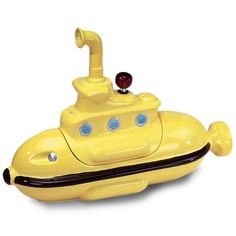
Yes, this is a bong. I don’t even smoke and I want one.
Folks, someone in the Beatle fan community told me recently that he’s writing a book about the Beatles and drugs. It’s a fascinating, underconsidered topic — well, underconsidered by all but right-wing nutjobs, more about that later. Any weary perusal of our comments will attest that it’s one I have a lot of interest in, and opinions about. (This post and thread is but one of many.)
This fellow asked me a question about John’s drug use in the 1979-80 period, and I immediately thought of several books that would be essential in determining that: Goldman (obviously), Fred Seaman’s The Last Days of John Lennon, and “John Green”‘s Dakota Days. These three sources are widely dismissed — and sometimes even reviled — within Beatle fan circles, but it’s precisely their skewing towards the salacious that makes them particularly appropriate when researching a topic like this. One mustn’t necessarily believe them, more use them to figure out what needs to be pondered, and where to look next.
It’s like this: in the late 60s and early 70s, there sprang up all over the country these things called “underground newspapers.” Full of sexual content and profanity, these publications bore no resemblance to the so-called “straight press,” and openly rejected the conventions of mainstream journalism. Which made them very bad at covering some things — if you want an unbiased view of something, you wouldn’t find it in an underground newspaper. But for other things (sex, drugs, youth and counterculture, and the rest of the vast slice of life that offends advertisers and/or authority figures), the undergrounds were essential.
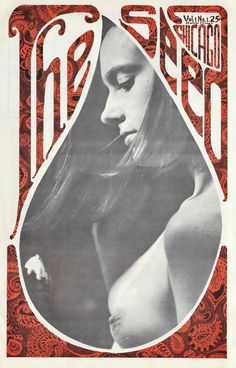
The Chicago Seed, edited by future Northwestern journalism professor Abe Peck.
For these topics — even some falling solidly within the purview of conventional journalism, like police brutality — they are an infinitely better source than the straight press of the era. And the farther afield you get, the more taboo, the more essential they become. To piece together the reality of drug use, for example, using the straight media of the Sixties would result in a laughably inaccurate, vastly manipulated, utterly useless result. The only responsible thing is to turn one’s bullshit detector up to 11, and dive in.
The muckraking biographers of the Beatles are, in some ways, direct heirs to these underground newspapers. When something is seamy, especially if it deals with sex, drugs, or money, they move towards it, not away; they assume that John, Paul, George and Ringo’s straight persona is an essentially cynical lie to be dispensed with. Though their work is unimaginable before the underground press cleared the way, they often use this freedom to put forward an essentially conservative agenda. Nixonian smear tactics x the underground press = Albert Goldman.
John F. Kennedy, Model Husband
In our society, drug use and sexual behavior are so surrounded by strong taboo that they are unlikely to make it into “the authorized biography.” How many biographies of John Kennedy had been published before any of his vast and compulsive sexual escapades were made known to the public? Or his (rumored) experimenting with marijuana and LSD? (Not sure I believe Tim Leary on this one. It’s just too comfortable for the counterculture. Great crazy thought, though — and not impossible, I guess.)
This is not simply prurient interest: President Kennedy’s sex life certainly had an impact on who he was as a person, and what he did and did not do as President. It impacted not only his policies (via his psychology), but also his day-to-day effectiveness in the Oval Office. For example: he could not remove J. Edgar Hoover, the racist head of the FBI, because Hoover had a ton of sexual dirt on him — thus the effectiveness of FBI agents in the segregationist South was much lesser than it might have been. In a million different ways, Kennedy’s sex life impacted his Presidency. So it’s not only fair game, it’s essential to engage with, even though it draws biographers and historians out into the murky waters of the underground press. Similarly, I just ran across a fact I’d forgotten: JFK was taking testosterone daily throughout his Presidency. Has any historian ever asked the obvious question: was Kennedy’s priapism a side-effect of the medications he was on? By viewing taboo behavior solely through the flattening lens of morality, we often miss what’s important about it.
OK, where are those Dutch whorehouse pics?
The Beatles are a slightly different story, in that the stakes attached to their individual behavior were much lower. They probably wouldn’t have made their quantum leap so quickly without Preludin, nor been able to tolerate late-stage Beatlemania without vast quantities of pot. However — and this is something that Paul and the Beatles generally understood, while Mick and the Stones (to use the obvious counterexample) generally did not — their position as role models for children precluded total honesty towards the press. And for most of the Beatles’ reign at the top of the pops, the press willingly reciprocated that arrangement.
I believe that John and Yoko were trying to run a similar kind of arrangement with the press in the 70s and 1980. Within some circles, their eccentricities were so widely known as to be accepted — an “open secret” as it were. But this secret was generally kept; out of friendship, or wanting to curry favor, or having secrets of one’s own. And not even the most aggrieved heroin dealer or brothel owner is going to go on the record in the manner necessary for a Major Metropolitan Newspaper. It’s interesting that John himself said of an earlier time, “There are pictures of me crawling out of whorehouses on my hands and knees,” but none of those pictures have ever surfaced. Was he lying? Doubtful. Were they lost? Would you have lost them?
Surely there’s a financial benefit to publishing a picture of John Lennon exiting a brothel at the height of Beatlemania. Or maybe that benefit is exceedingly smaller than internet cynics would have you believe. Certainly there is a power keeping stuff unknown, and on certain topics, it seems to be more powerful than the complementary forces pushing things into the light.
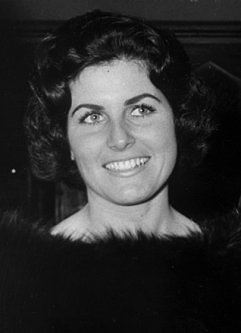
Judith Exner, a very friendly person.
Who’s Talking, When… and Why?
The “revelations” about President Kennedy began around 1975, when it was leaked that he’d slept with Judith Exner, a one-time girlfriend of mobster Sam Giancana. (This story may have been broken by GOP lackey/Nixon speechwriter William Safire.) After that, the info proceeded apace — Inga Arvad, East German spy Ellen Rometsch; Marilyn Monroe; Mary Pinchot Meyer… until finally Sy Hersh, the gumshoe’s gumshoe, wrote a whole book on “The Dark Side of Camelot.”
What is often not emphasized in this well-known narrative is the timing of these revelations. They began right as the US intelligence community was being called onto the carpet, via the Church and Rockefeller Commissions. And they continued as the House Select Committee on Assassinations probed the murders of JFK, RFK and Martin Luther King (who, it should be noted, also had some dirty laundry come out during this time). Even during the Reagan-Bush era, there is an inescapable political motive for smearing JFK — publicizing the affairs of a dead liberal to push the country conservative and tarnish the legacy of the Sixties.
Culture warriors
Reaction to this right-wing attack machine is, I think, much of why Goldman’s book was so reviled — yet another Sixties hero being dragged through the mud. But that surely was intentional; I’ve never bought for a second that Goldman began as a fan. I think tearing Lennon down was a large part of why Goldman wrote the book, and the 1988 optics of that were why the publisher encouraged him to go in that direction. It’s difficult to explain to someone who didn’t live through the viciousness and single-mindedness with which the Reagan and Bush crew — essentially Nixon Part II — attacked the people of the Sixties, and the mindset of the Sixties. It was a crusade for them. Only now, 35 years later, have enough of them died off that we can think about legalizing pot, and treat gay citizens like, y’know, citizens.
To the extent that Goldman, or any other biographer, is engaging in politics or character assassination rather than sympathetic forensics, they should be criticized, and their conclusions viewed with skepticism. But John and his Beatles did engage in taboo behaviors and — setting aside the interesting question of whether having taboos reduces harm or simply spares our sensibilities — anybody who is interested in that side of their story, that side of their personalities, is forced to truck with sources that are iffy. If they weren’t iffy, they wouldn’t have dug out that material in the first place; just as one can spend an entire day at the Kennedy Museum in Boston and never hear about Fiddle and Faddle. (At least this was the case in 1982, when I went as a kid. Maybe it’s changed, but I doubt it.)
Because more sober biographers won’t go there, we’re left to sift through the material ourselves. Lennon always said the reason he didn’t get addicted was that he always sniffed heroin, rather than injecting it. And yet, isn’t the hypnotic opener of “Come Together” him hissing “shoot me”? This isn’t pondering what color socks he was wearing in 1969 — it’s attempting to understand something very important about the daily life experience of John Lennon, that most autobiographical of songwriters, at a pivotal point in his career. What he used, how much, when, and with whom is terribly important, because drug use comes with a whole lifestyle, mindset, cast of characters, vulnerabilities, and neurochemistry. And he knew this, which is why in the 1980 interviews he’s so very definite: no hard stuff anymore, no booze, just the occasional psychedelic.
Liking the Beatles is a political choice, whether you want it to be or not; if you’re socially conservative and yet resonate deeply with the music and message of the Beatles, sooner or later that’s going to have to reconcile. It might have been possible for the Beatles to be apolitical in some other time and place; but not here and now. But all that having been said, we can’t let politics — who we wish John, Paul, George and Ringo to be — outweigh who they were. And this is particularly important when talking about the truth-based ethos of the Sixties.
Any suggestions for our friend?
What sources have you found to be particularly good regarding the Beatles and drugs/sex? In addition to the ones I noted above, I recall that the Miles/McCartney mashup Many Years From Now isn’t shy. And Tom Doyle’s Man on the Run was good, too. Anybody read any Giuliano, for example?

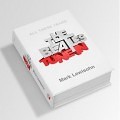
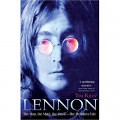

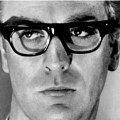
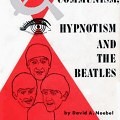
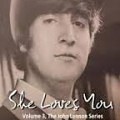
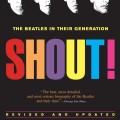
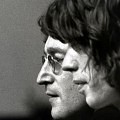
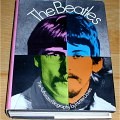
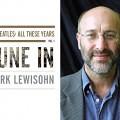

was Kennedy’s priapism a side-effect of the medications he was on?
I’ve read many books on JFK and yes it has been mentioned that his sexual behavior might have been a byproduct of the hormones he was taking.
As for the Beatles’ drug use, what a fascinating topic. I would love to read a book that focuses on that. I agree Many Years From Now is an excellent source. I was also wondering about Blackbird by Giuliano. I have heard that it’s not very credible so I would never read it unless I was convinced that it had credibility. Has anyone here read it?
Extra points if you can identify this quote, Linda:
“I don’t care if it’s horse piss. It works.”
although not specifically about the Fabs, this is an interesting tome on the topic you may find to be of tangential interest:
http://www.amazon.com/Dr-Feelgood-Shocking-Treating-Prominent/dp/1620875896/ref=sr_1_1?s=books&ie=UTF8&qid=1444753322&sr=1-1&keywords=dr+feelgood
That would be Dr. Max Jacobson, purveyor of “horse piss.”
@Michael Gerber – that’s JFK on injections he was getting from his Dr. Robert-type doctor, to RFK who was telling him what was in those shots?
ding ding ding, @Michael wins the prize.
I would love to read a truly scholarly book on The Beatles and drugs, one that analyzes its effects on their art. In particular, I want a chapter on the cocaine use during “Pepper”, since that is about the most incongruous thing in the history of the world, but apparently it really happened (according to Paul).
This isn’t really a “Beatles and Drugs” book, but I was just looking through Peter Brown’s “The Love You Make.” It’s good on John’s drug use, at least. Goldman—relax with the pitchforks, guys—is very good at raising (and frequently sourcing) this as well, especially in the post-Beatles era. It’s sort of amazing to me that thirty-five years after Lennon’s death, even as the general consensus opinion on him has expanded to include much of what Goldman reported—John was violent, he was horrible to women, he was horrible to Julian, he wasn’t always great to Sean, he was hypocritical, he was petty—the idea that heroin was only an issue until “Cold Turkey” came out persists. That means to me that heroin’s really, really closely tied up with the Reality of John and Yoko, that going in that direction would get a writer in trouble, even though Yoko’s had to concede the untruth of a lot of other aspects of the St. Lennon myth since 1988. Peter Brown says outright that heroin was the biggest single factor contributing to the group’s breakup (p. 277 of the paperback edition). I would love to read a book just on John and “H.”
@Michael, that’s my sense too, and it’s why I took such issue with @Marcus on an earlier thread. With all the stuff that has come out, the problem with Goldman’s book is increasingly its anti-Lennon attitude, not its basic factual parameters. And yet in 1988, the howls were that it was lies.
Lotta smoke. Fire? Who knows, but we can’t assume that “if it’s true, someone would’ve published it, because: laws.” There’s more going on here.
Agreed. My personal guess is something like this: heroin is incredibly difficult to kick, especially if you’re an addictive personality like John (and, it seems, Yoko). Maybe they tried to kick it for the first time for the first time in 1969, and John wrote Cold Turkey. But then it seems they relapsed, maybe a few times, maybe switching to methadone a few times—and relapsing again. The sound of a lot of the “Imagine” album makes me think, “heroin.” (I’m a Stones fan, and the sonic similarities to something like Goat’s Head Soup, after the rot of addiction really set in, is pretty strong.) Speaking of the Stones, there are accounts of John showing up when they’re in Nellecote, strung out, and in Goldman, it sounds like John was also using when he set up camp in New York for good in ’71-’72. Goldman also claims that John started using again after Sean was born, and didn’t quit until 1979-80.
What’s the point of rehashing all this? A couple of things. First, Yoko’s on the record as, at the very least, telling John she had had a good experience with the drug when she tried it “in a party type situation,” when he asked her in 1968, and as taking it with him “in celebration of ourselves as artists,” or whatever the exact quote is, at that time. If it turns out that John didn’t manage to tie himself to a chair and kick the drug in late 1969, it’s not too hard for people to start connecting the dots and—possibly—implicating Yoko for something a whole lot more insidious than an ill-advised low point at the end of the naïve Sixties. Second, the long relapse into smack during the Dakota years suggests two things: John was really unhappy, and he wasn’t the drug-free househusband doting on Yoko and Sean that he claimed to be. I think the presence of smack is even more destructive to the JohnandYoko Dakota Years story than simply, John had a lot of issues and he was depressed for some of that time. Third, it’s pretty easy to link the eras when we know or have good reason to think John was using in that timeline I sketched out to the points when John’s creativity was at its nadir—between Imagine and before Walls and Bridges (when he seems to have switched to alcohol for a while), during the lost years. The Myth depends on, one, ignoring how bad a lot of John’s 1971-1973 output was, and two, believing that not creating from 1975-80 was a deliberate, mindful choice, not the result of someone lying in a dark room in a heroin trance.